We tested the 3 best video doorbells in 2025 – enjoy rich images, crisp audio, and straightforward installation with or without monthly subscriptions
There are lots of choices out there, but Ring, eufy, and Blink made our top three
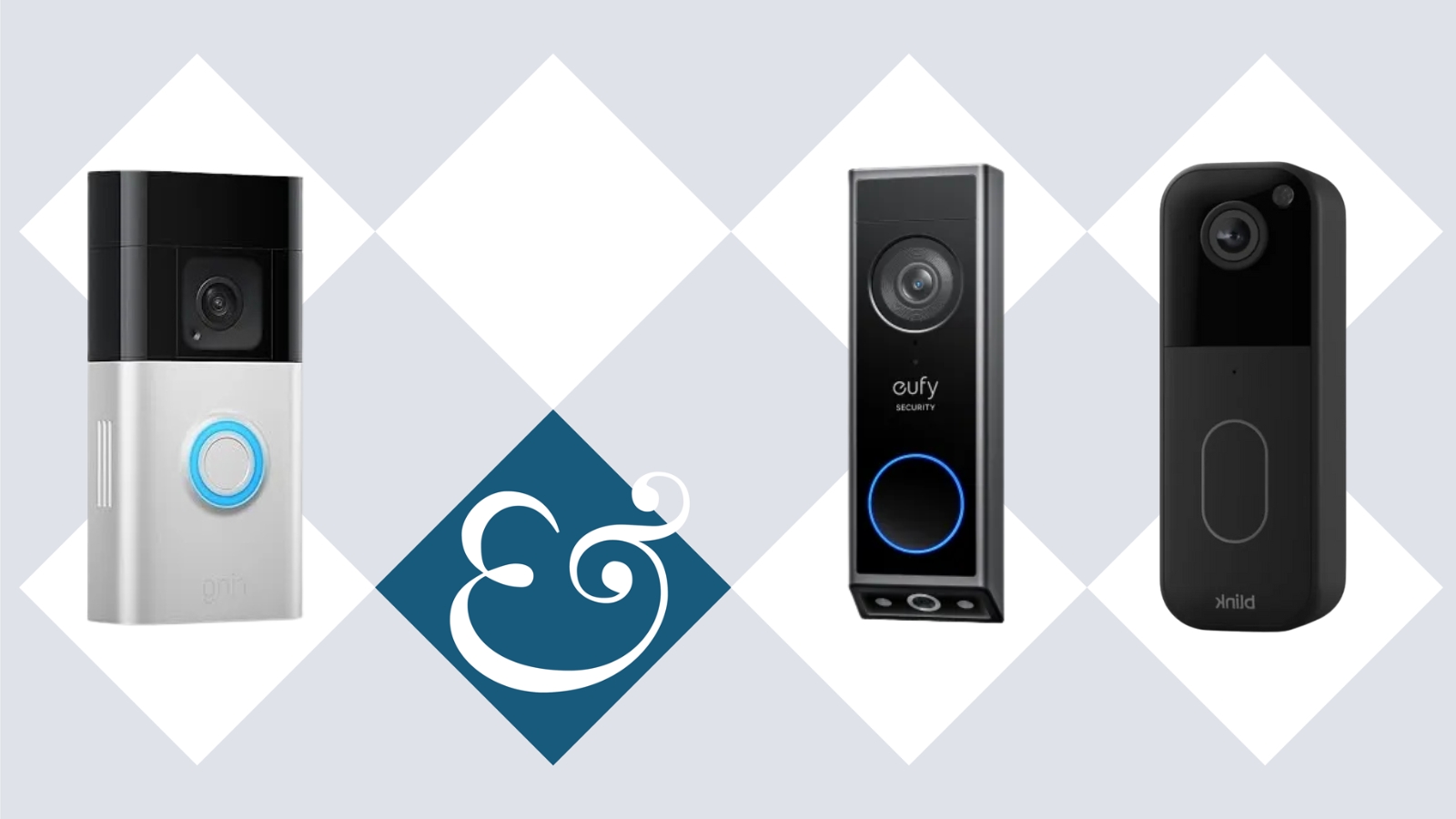

The best video doorbell will do more than improve your home security. You can speak to delivery drivers, greet guests, and even see when a parcel has been left at your doorstep.
But like with any smart gadgets, there is no shortage of video doorbells to choose from, so we've thoroughly tested the three most popular models from trusted brands to see how they work in real-world conditions over time. Understanding their day-to-day performance will help you choose the right video doorbell for any home and budget.
We tested each video doorbell for at least two weeks, sometimes months, to understand how every feature works in different weather and lighting conditions, whether it's rich images, crisp audio, rapid notifications, or AI detection features. Here are our top picks to secure your home.
The one-minute verdict
To enjoy the most features, the Ring Battery Doorbell Plus with the Standard, $9.99 a month subscription is our top pick. It has everything you'd need, including a clear picture day and night and in poor weather conditions, responsive two-way audio that mutes background noise and echoes, a wide field of view to see packages and faces simultaneously, and instant motion detection that you can adjust the sensitivity of.
But the eufy E340 has the best selection of features if you don't want to pay a monthly fee. It also has a rich color 2K FHD camera that works amazingly, night or day, and can locally store up to 8GB of recent clips without a subscription (it auto-deletes the oldest to keep your storage functional). It also has a second camera pointed at the floor to read package details, and it has crisp two-way audio, although it can be a little slow to access the live feed if you're away from your router at home.
The Blink Video Doorbell at Amazon is the best budget option. Costing just $69.99 at full price (and often discounted), it's around two-thirds cheaper than the Ring or eufy, with most of the essential features still in play, such as two-way audio, night vision, real-time alerts, and motion detection.
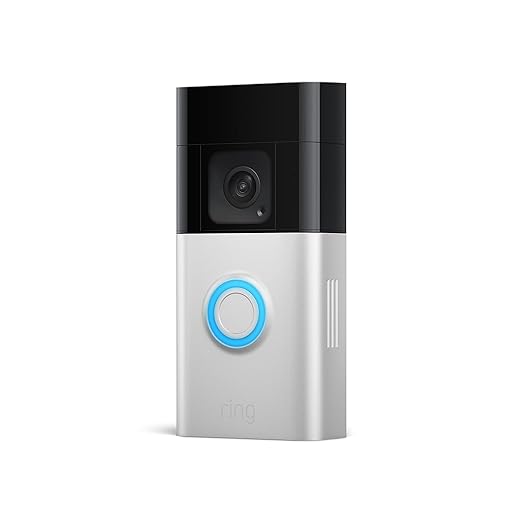
The best video doorbell with a subscription
If you're happy paying $9.99 a month, the Ring Battery Doorbell Plus has the best features on offer, with clear picture day and night, two-way audio that's free of echoes and background noise, and instant notifications to the live feed. It uses a fish-eye lens to capture a wide, tall field of view.
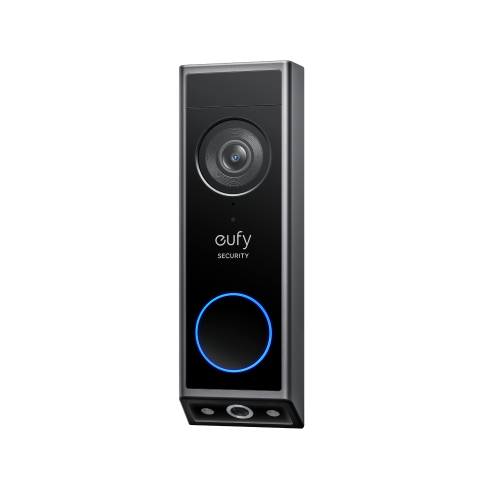
The best subscription-free video doorbell
The eufy E340 has the best feature set if you'd rather avoid paying monthly costs, with up to 8GB local storage and automatic recordings of live clips, with the option of a paid subscription for extra storage. The 2K FHD camera picks up small details in daylight and at night, with a second camera facing towards the floor to see packages.
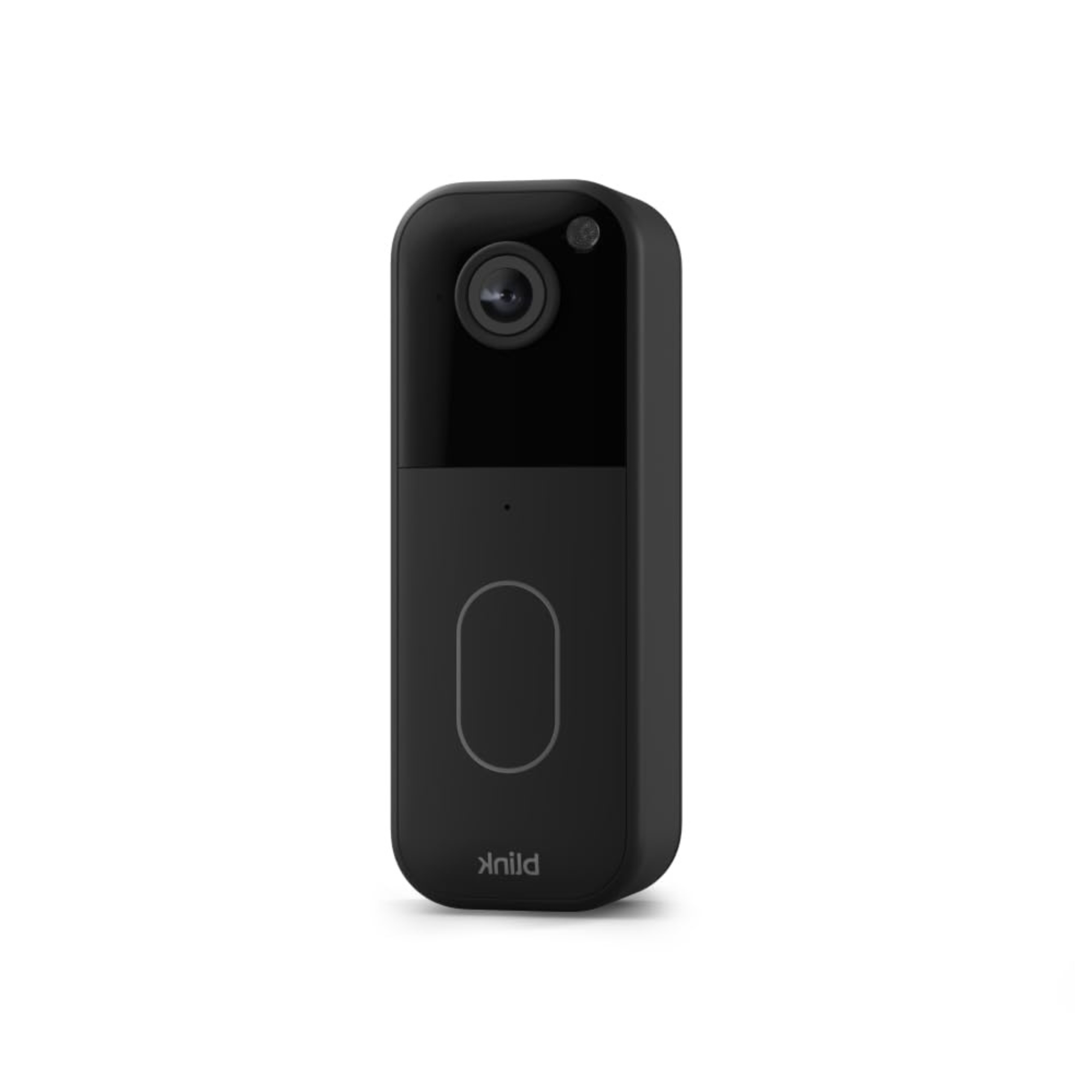
The best budget video doorbell
Costing around $100 less than the Ring and eufy, the Blink Video Doorbell is the best choice if you're on a budget. There's a slight decrease in picture and audio quality as the hardware is less advanced, but the essential features are all there, and you can get by without spending big on an expensive subscription plan.
Video doorbell | Field of view | Resolution | Object recognition? | Night vision? | Two-way audio? | Storage | Installation |
Ring Battery Doorbell Plus | 150° horizontal, 150° vertical | 1536p HD+ | Yes (person, package, vehicle) | Yes | Yes, with noise cancellation | Cloud (subscription only) | Screws or adhesive mount |
eufy E340 | Dual cameras: visitor and floor | 2k FHD | Yes (person, package, vehicle). Can name people for auto-recognition. | Yes | Yes | 8 GB local storage (free) 16 TB (one-time paid extra) Subscriptions for increased storage | Screws, or adhesive mount from third-party vendors |
Blink Video Doorbell | 150º horizontal, 150º vertical | 1440p HD | Yes (person, vehicle) | Yes | Yes | Local (USB drive and Sync Module 2 needed) Cloud (subscription only) | Screws, or adhesive mount from third-party vendors |
The 3 best video doorbells in 2025, tested by us
The best video doorbell with a subscription

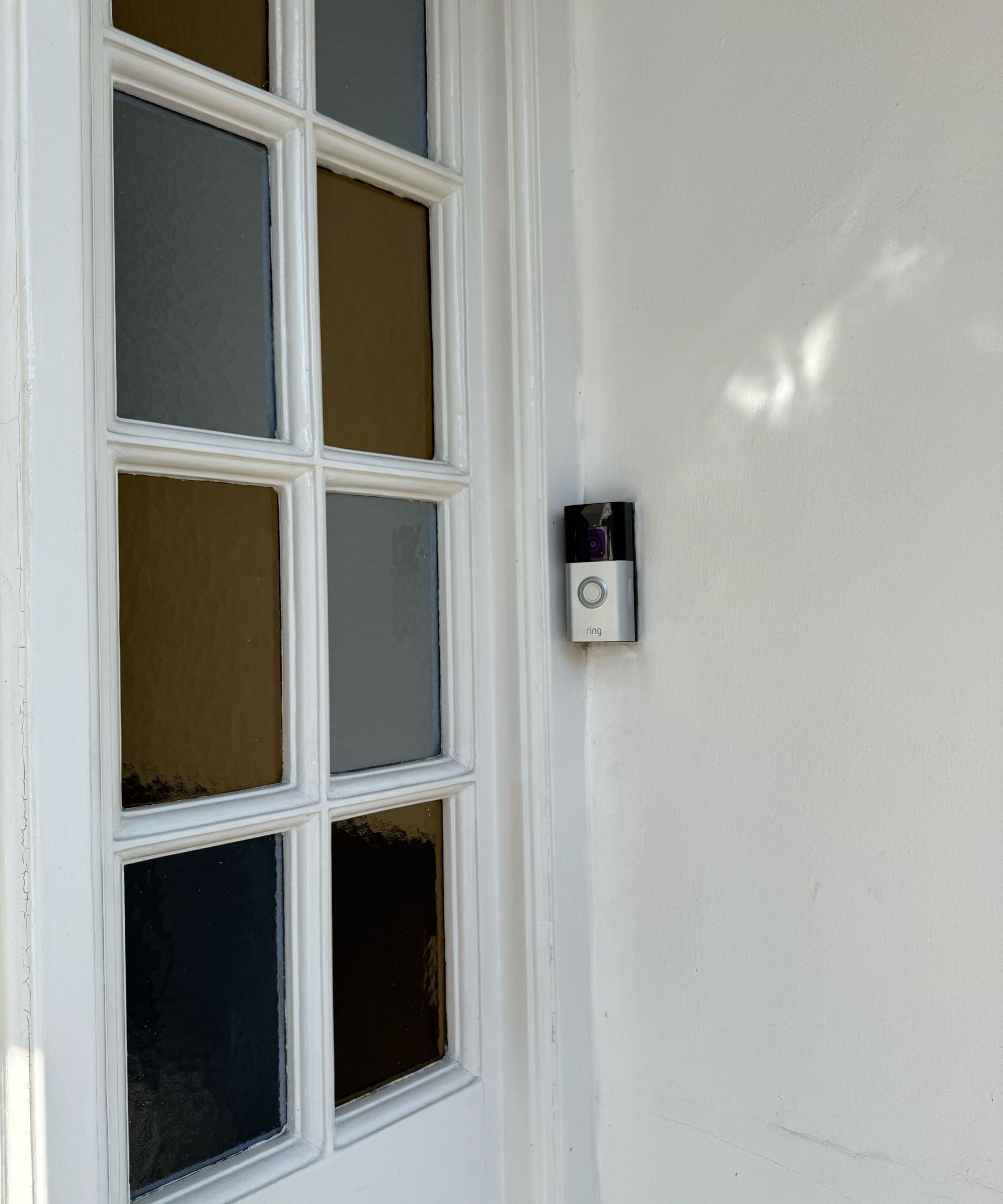
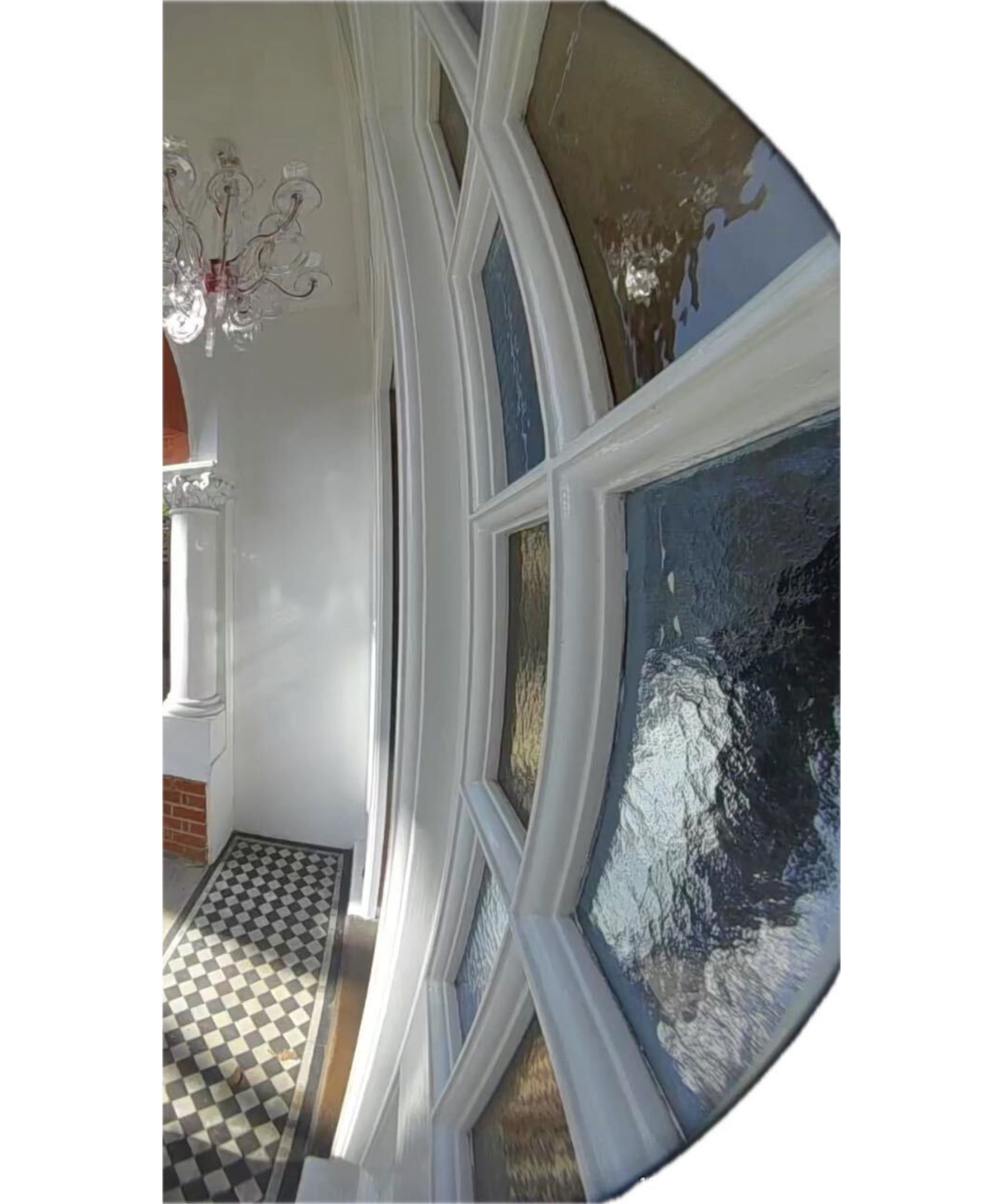
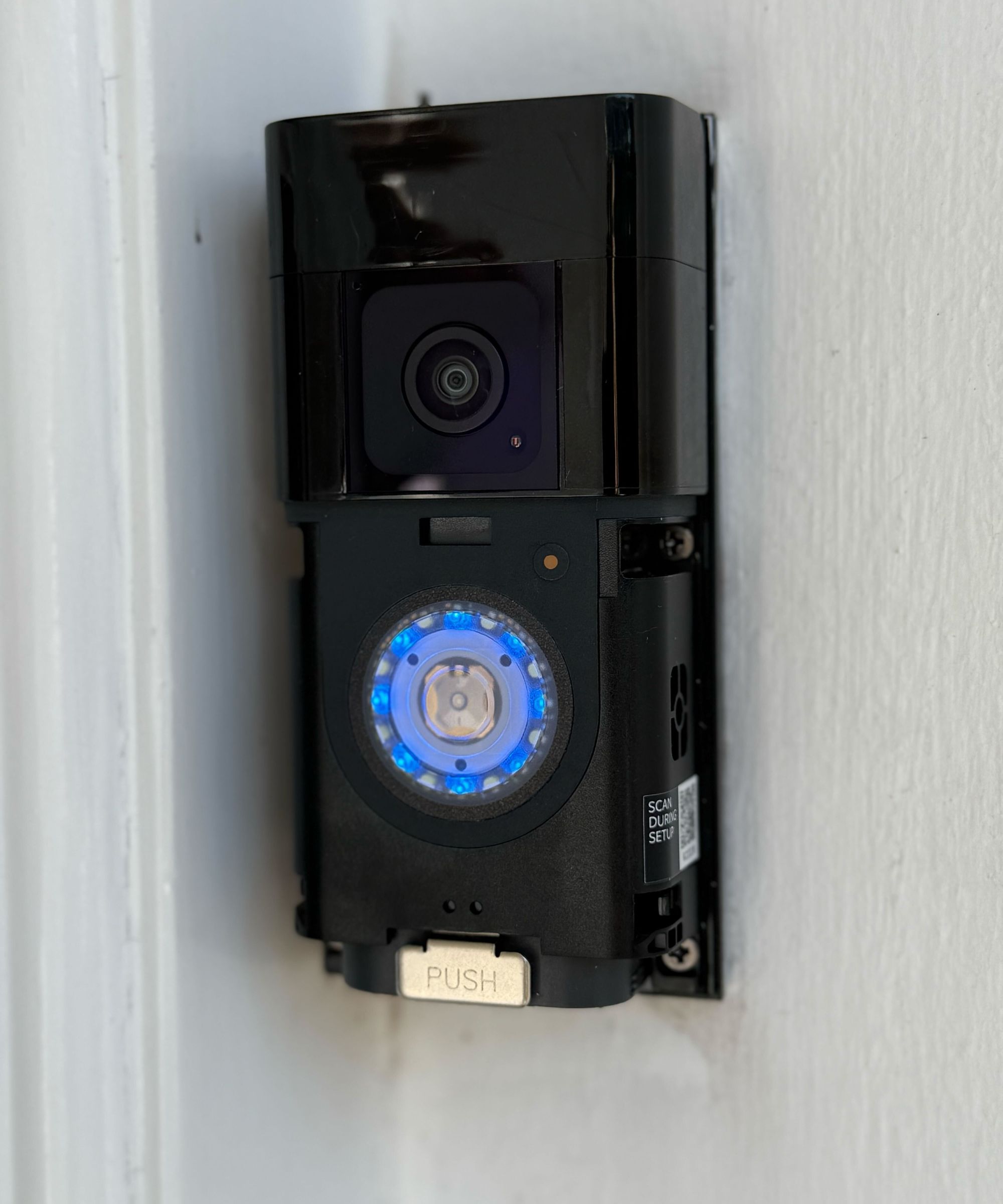
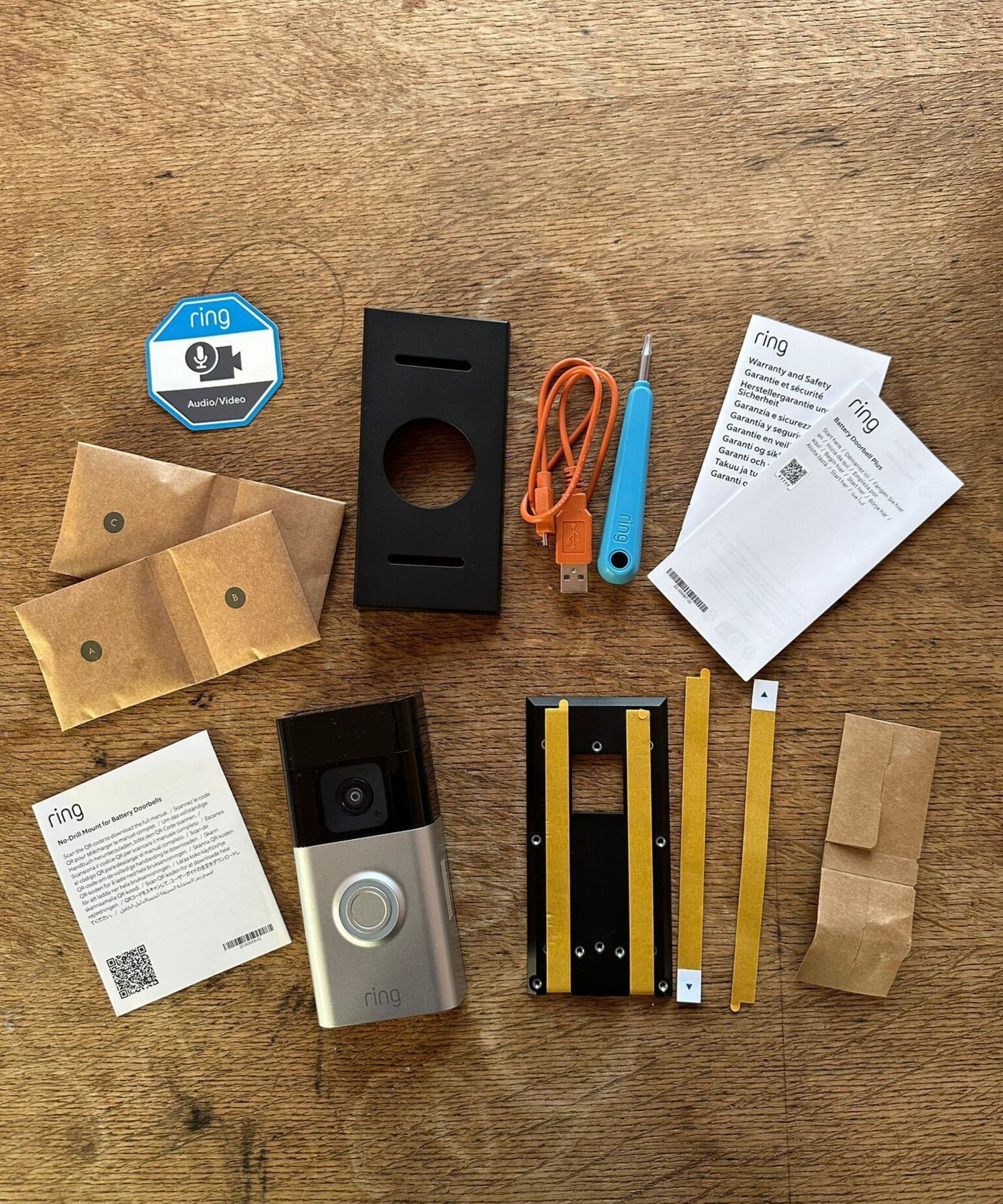
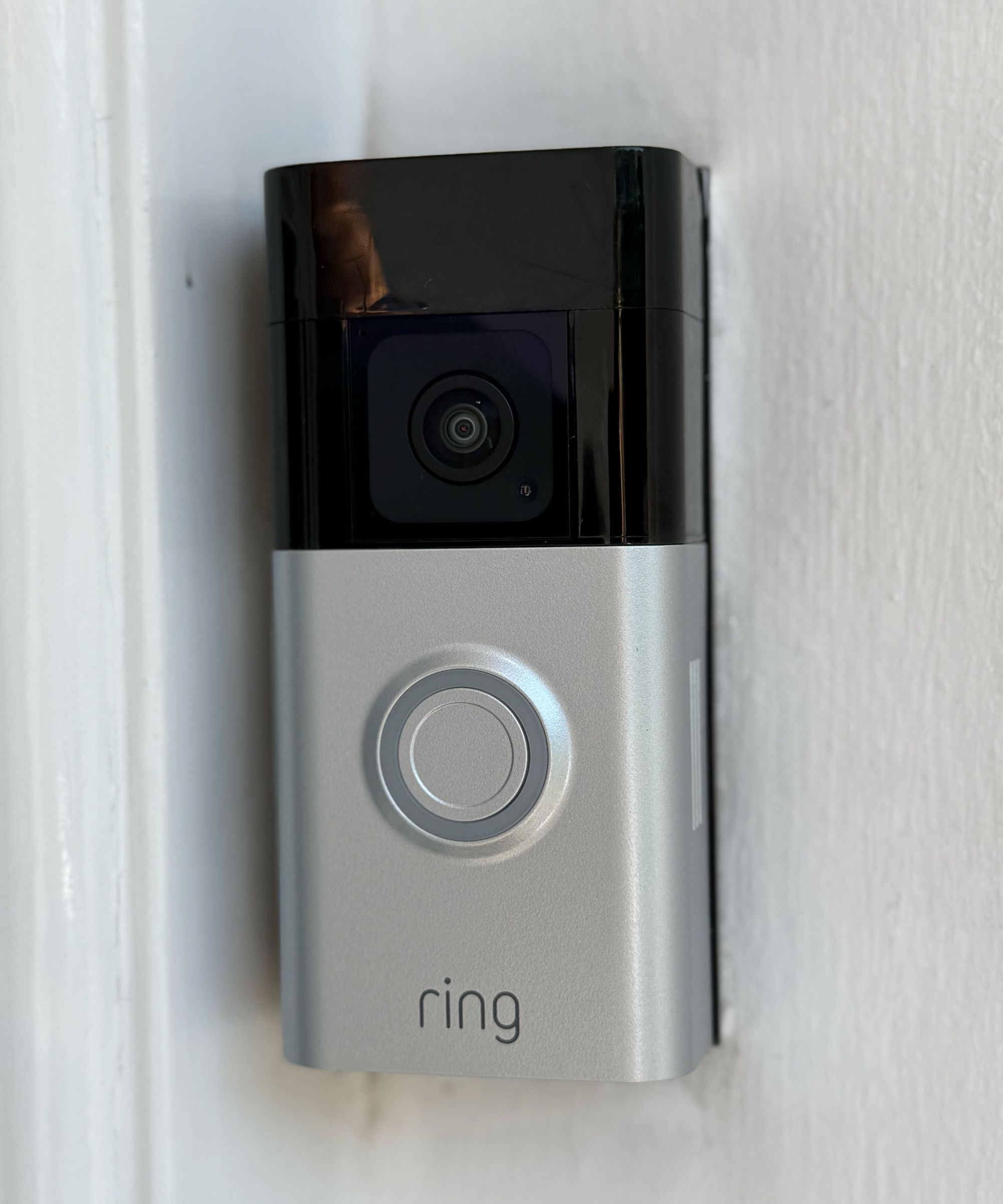
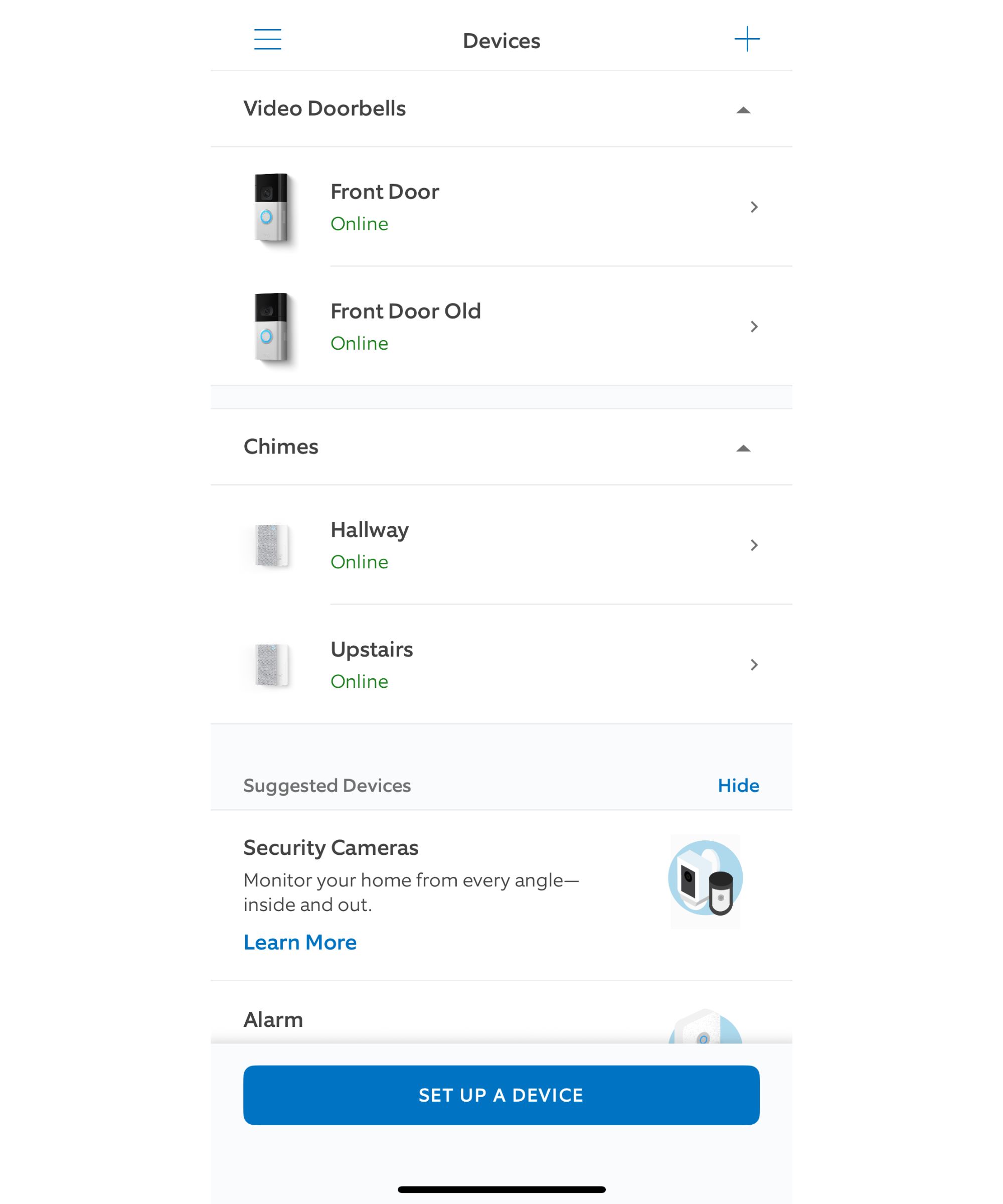
Reasons to buy
Reasons to avoid
With detailed picture quality, two-way audio, and a battery that lasts for 6-12 months on a single charge, it's hard to ask for more from the Ring Battery Doorbell Plus. It's one of the most effective home security measures we've tested at Homes & Gardens.
The 1536p HD+ camera easily picks up faces, whether facing the door or standing side-on, and as it uses a fish-eye lens, you get the full view down to the floor, while being clear enough to identify the size, details, and branding of packages.
The night vision is excellent, with colors showing almost as clearly as during the day, and it detects motion just as quickly. Which is, to say, very fast, as the Ring's motion detection is so sensitive that it notifies you before someone's reached the front door, and it even picks up cars going past on the road. You can change the settings so that it's tailored to your surroundings, to avoid unnecessary pings.
Two-way audio is clear, without echoes or delays. The Ring Battery Doorbell Plus' noise-cancelling is a stand-out feature, as at no point did people's voices become muddied by the busy road, bad weather conditions, or even planes flying overhead.
The app is intuitively straightforward. You can instantly view the live feed or download clips from the past 180 days straight to your camera roll. Those who aren't tech-savvy will appreciate how easy it is to navigate, with every alert being accurate and rapid, while showing a handy preview of who is at the door.
Setup is painless, and if you're upgrading from a previous Ring doorbell, you'll be able to install it into the same mount. If you're not able to screw the mount in, you can also find a non-screw mount, like this adhesive mount at Amazon.
At $149.99, it costs more than the Blink in this guide, but is occasionally discounted to around half that. And when you compare eufy vs Ring, you'll find that eufy video doorbells offer more features without a subscription.
There are three Ring subscription plans available: $4.99 for Basic, $9.99 for Standard, or $19.99 for Premium every month, on a sliding scale for the features available. To really be able to use its features, I'd recommend Standard, as otherwise you're quite limited. And without a subscription, you won't have access to any recordings, and can only see the live feed, receive real-time notifications, and access two-way audio.
Read more in our five-star Ring Battery Doorbell Plus review.
The best subscription-free video doorbell

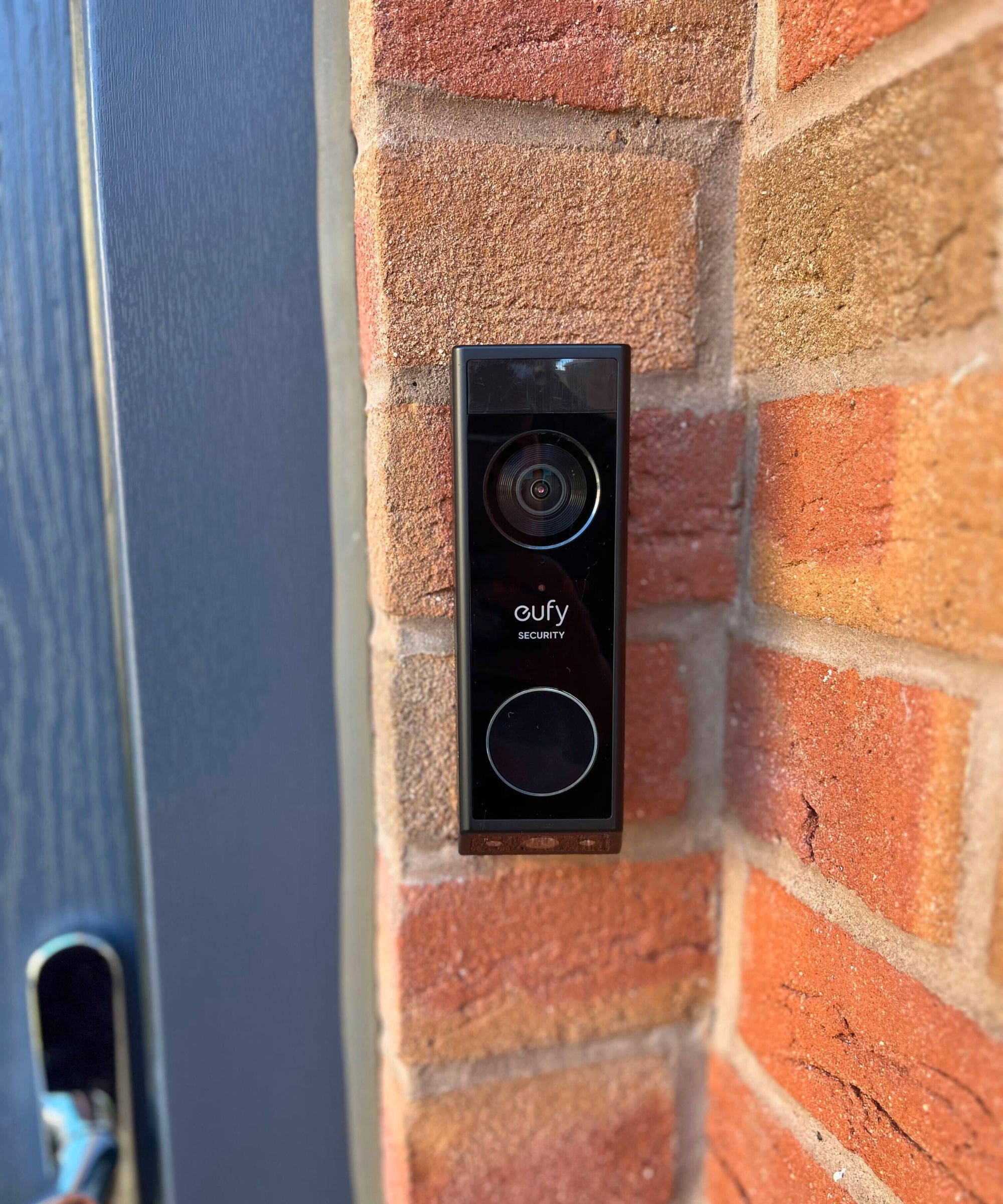
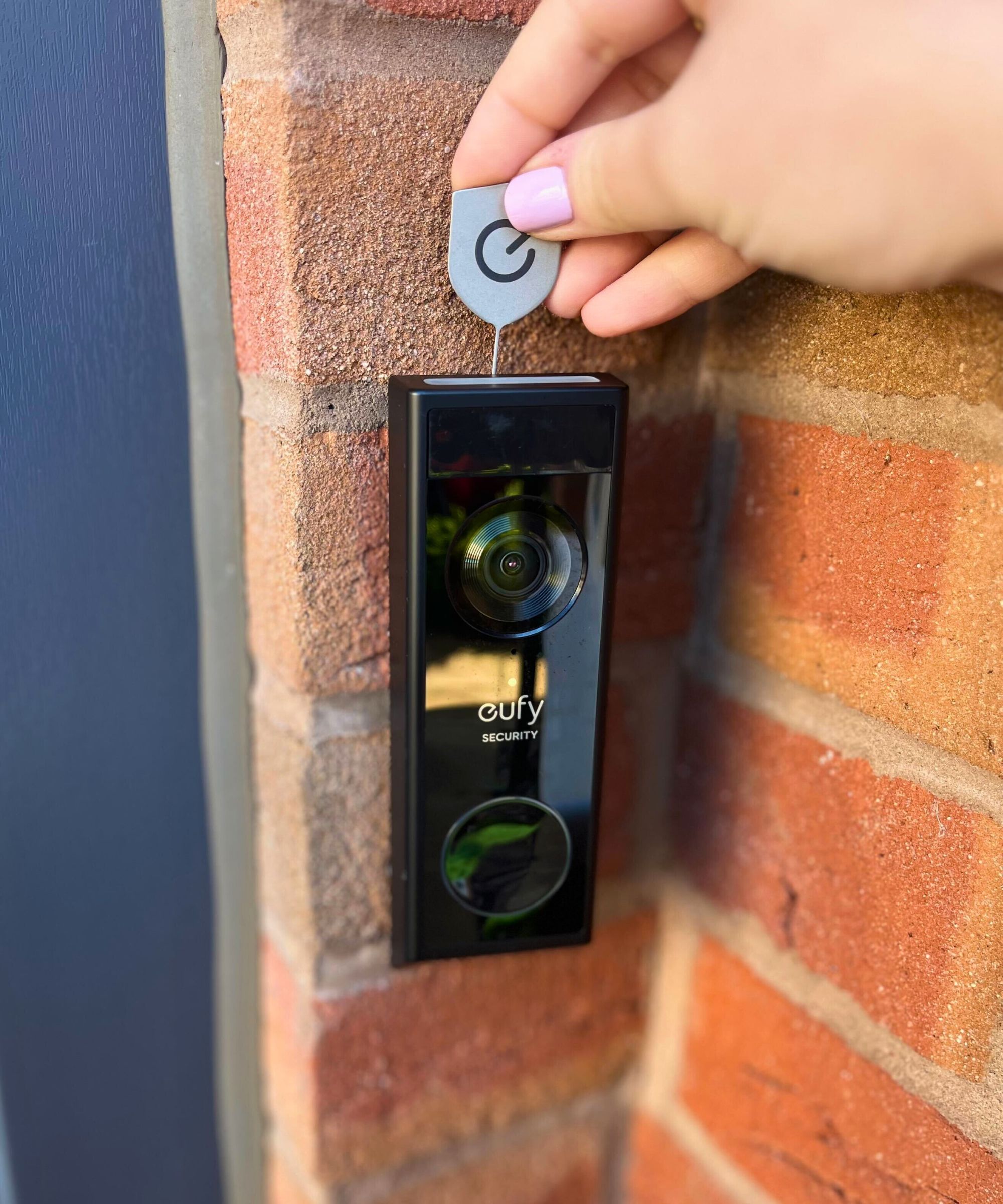
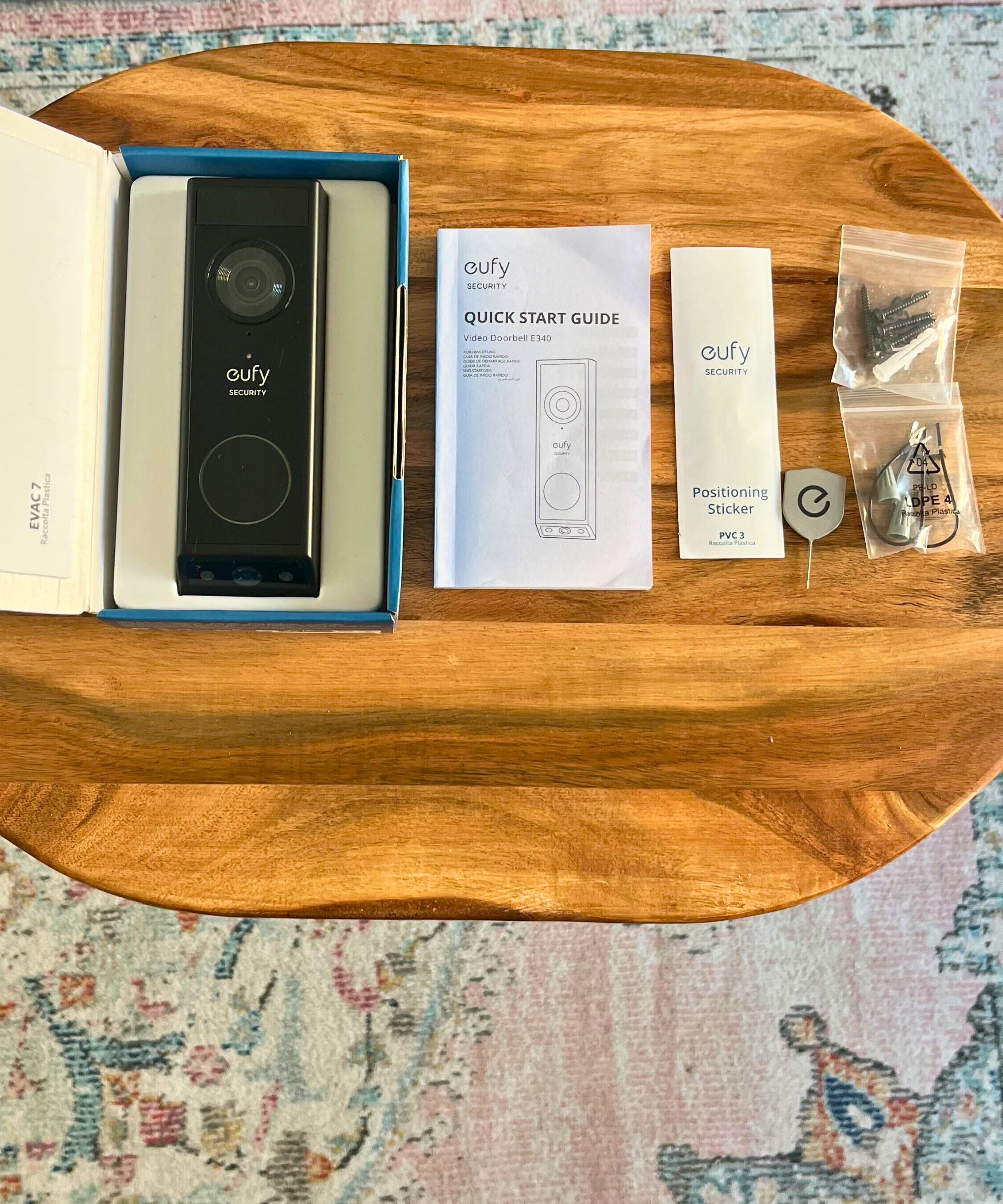
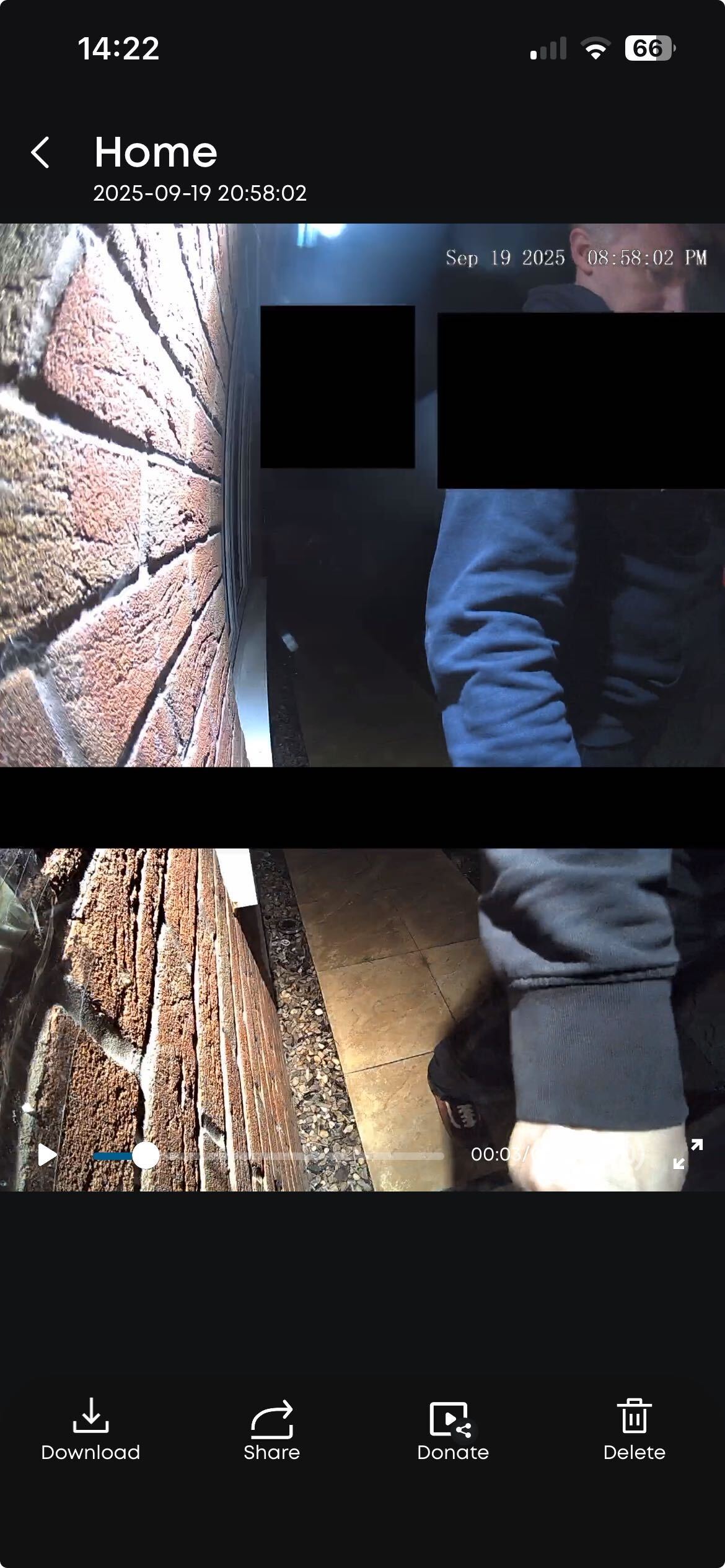
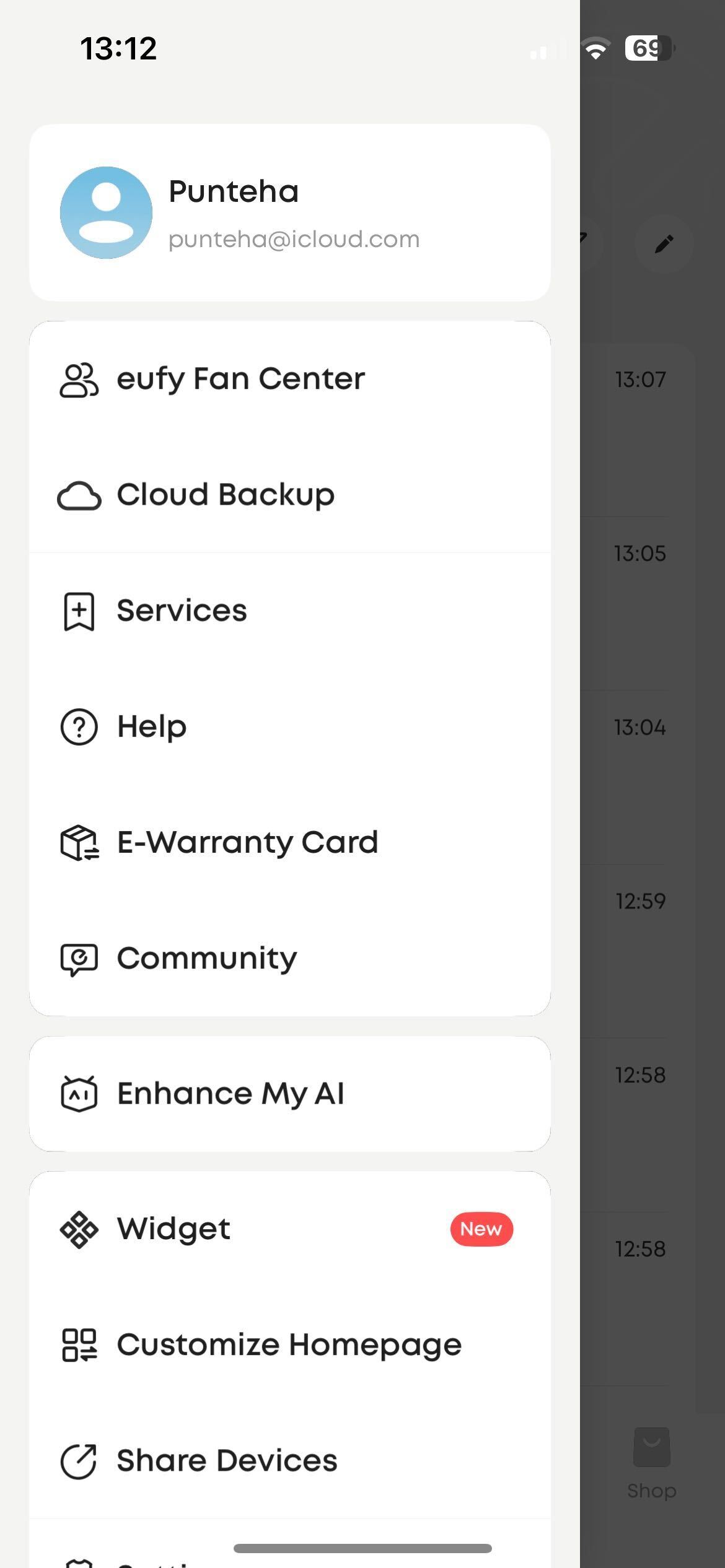
Reasons to buy
Reasons to avoid
If you'd rather avoid paying a monthly fee (who wouldn't?), the eufy E340 offers the best selection of features without one, with only the more advanced storage options requiring a subscription.
One of the most useful of these is the 8GB of free local storage that allows you to save clips of recent events. It's the only video doorbell in this guide that can save videos without a subscription, as the others only offer real-time video without paying.
Our tester and head of Solved, Punteha van Terheyden, has been using the E340 in her family home for five months. 'The device functionality is superb, the sound and video quality is crisp and clear, even at nighttime, and the app's navigation, menu and settings are easy to use,' she wrote in the review, touting it as one of the best security measures for a house.
Its 2K camera can identify packages, vehicles, and people, and you can name people in the app for the E340 to automatically recognize faces when they approach your door. Visibility is clear in the day and night, with full color at nighttime that's vibrant enough to pick up people's faces. It was the first on the market to have night visuals in color.
While the Ring Battery Doorbell Plus uses a fish-eye lens to achieve a wide field of view, the eufy instead opts for dual cameras: One pointed forward and one down at the floor. Both designs proved effective on test, and the eufy's downward camera is great at identifying fine details on packages.
Really, this is down to preference, as the eufy's display is true-to-size but with a break in the middle between the two cameras, while the Ring distorts the perspective, but its display is a single view.
Its only drawbacks are the slow load time when opening live events on your phone (our tester narrowed this down to how far away from the router she was), which can become frustrating over time, and that the privacy squares to protect neighbors' privacy are sent to the front of the display. If you live near a lot of neighbors, this can block a significant part of the view, including people's faces as they approach the door.
Read more in our full eufy E340 Video Doorbell review.
The best budget video doorbell

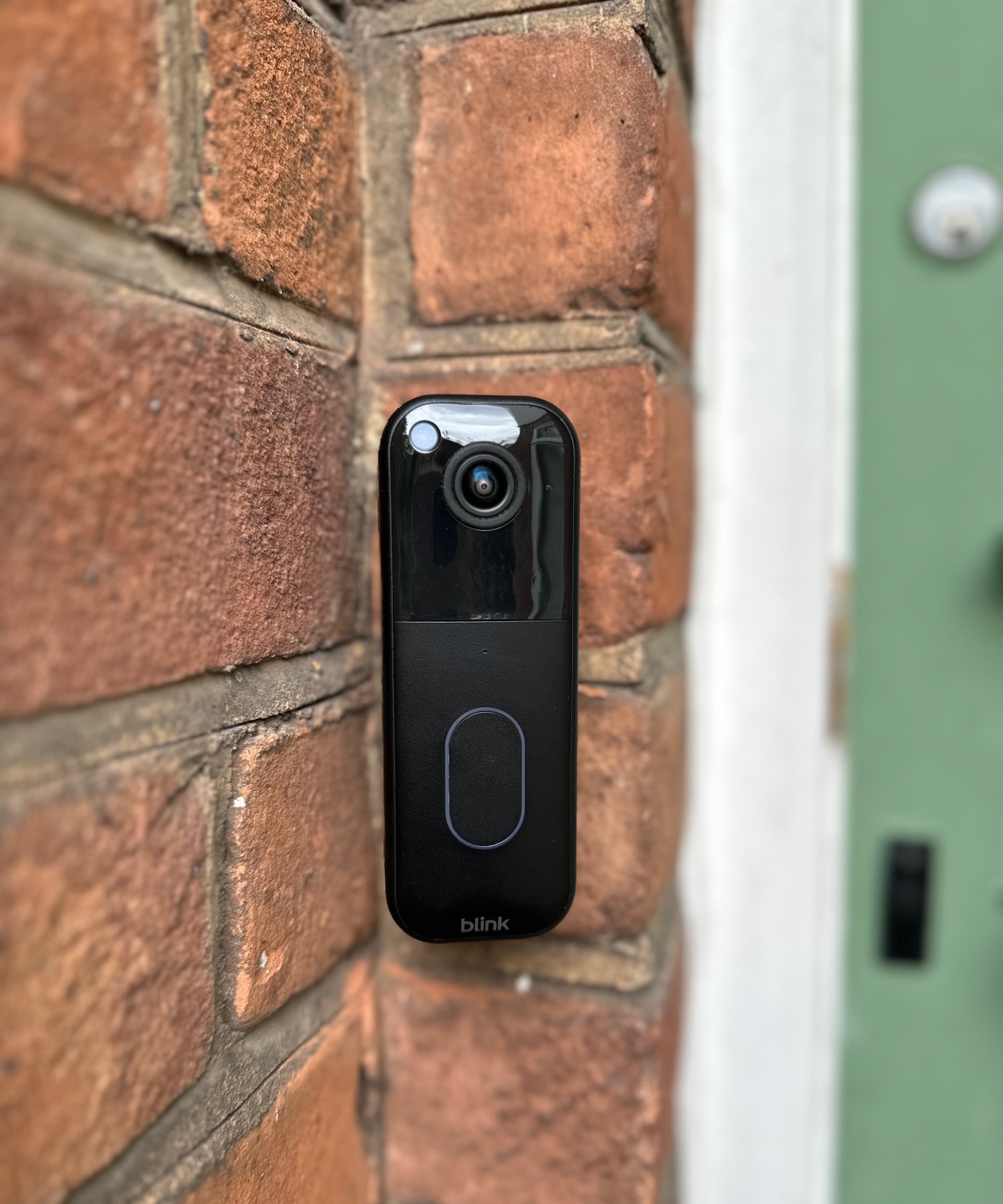
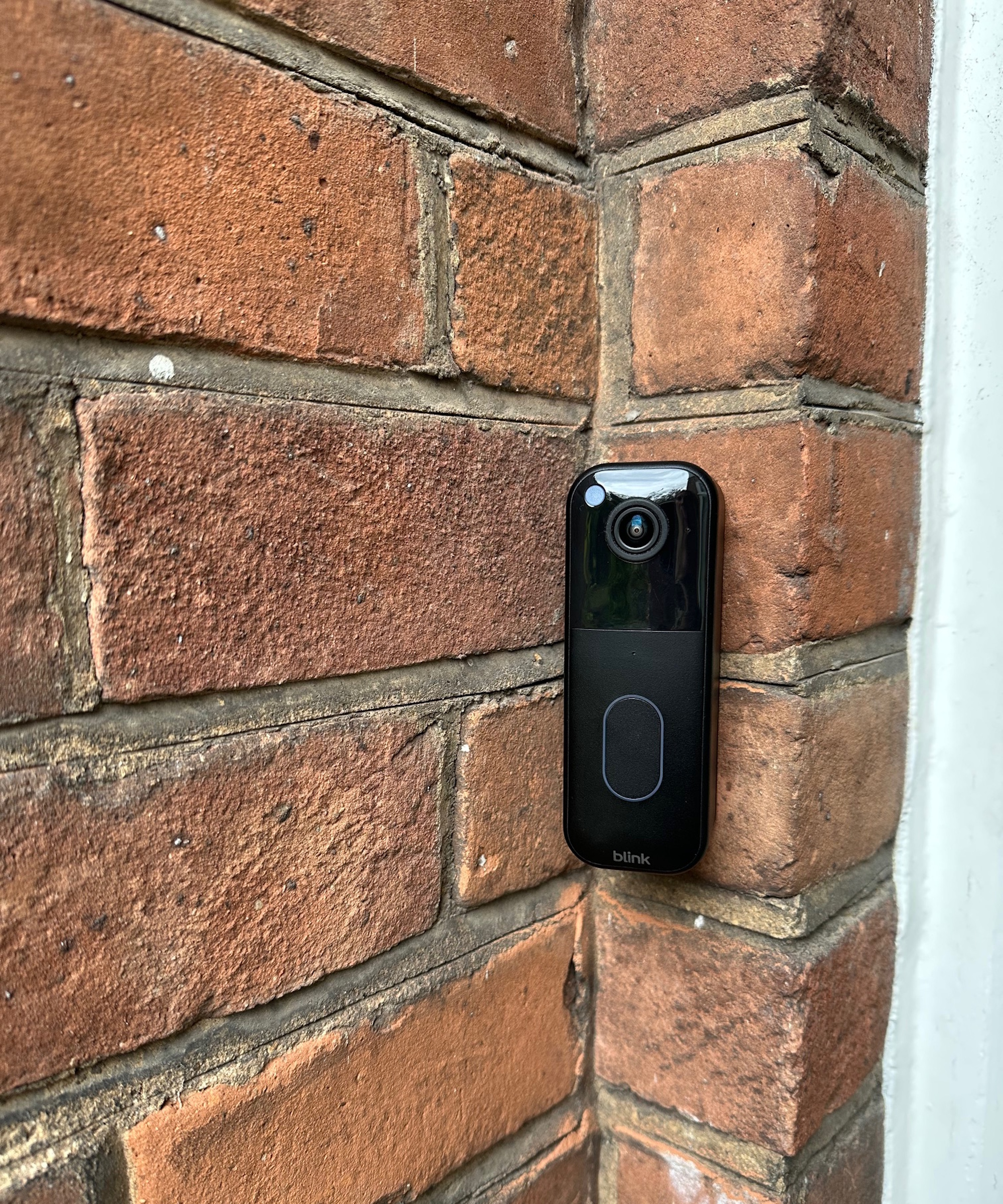
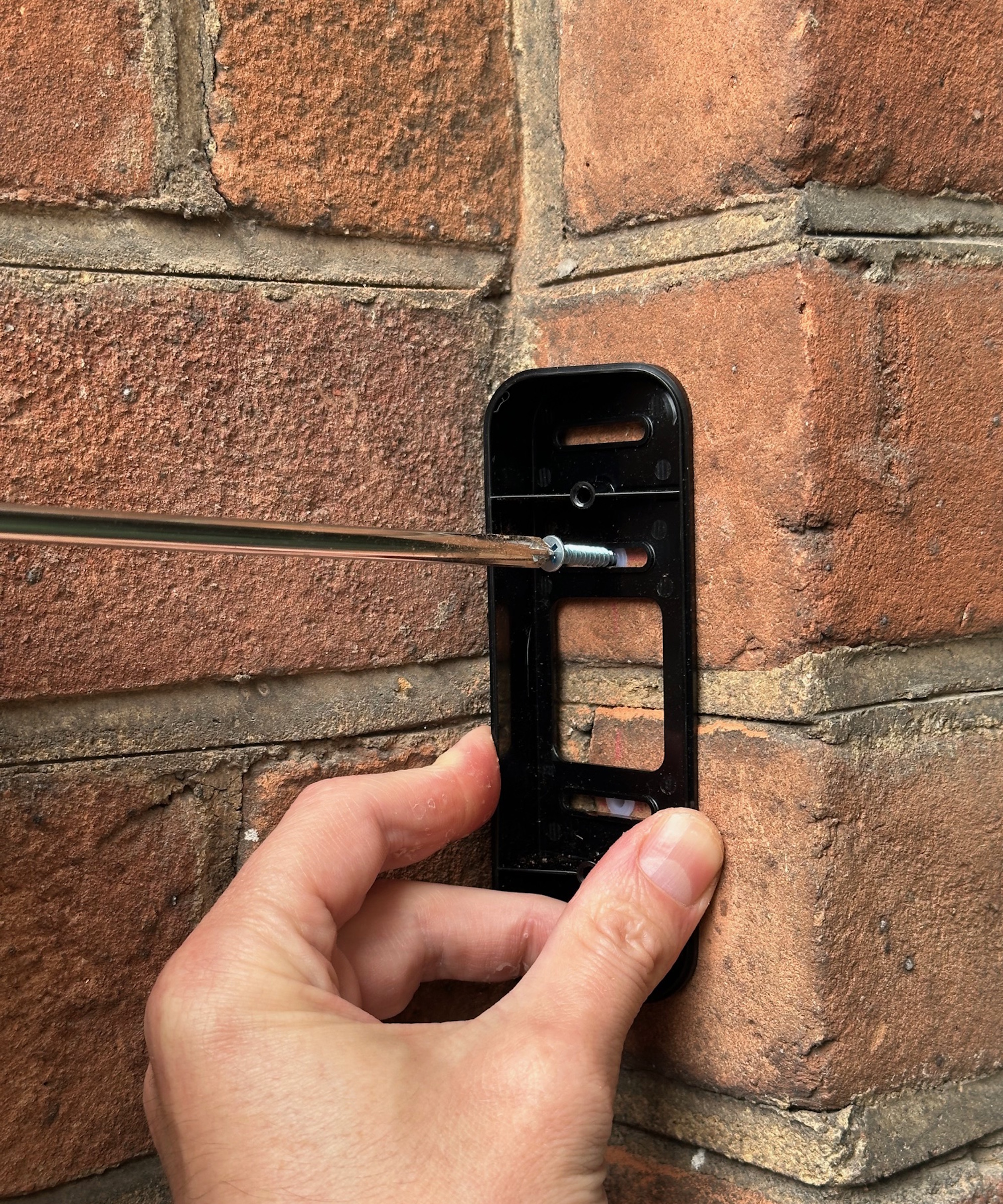
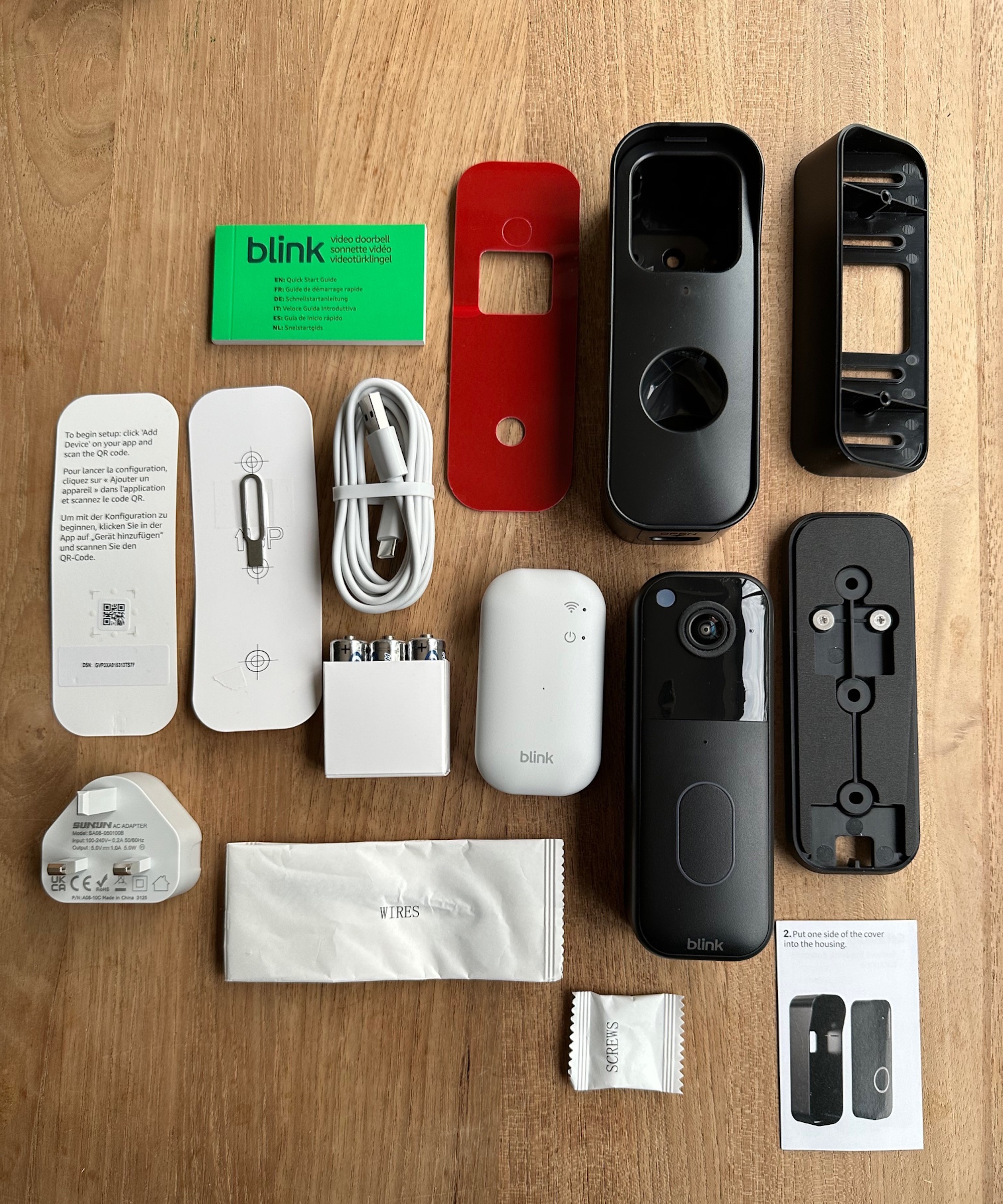
Reasons to buy
Reasons to avoid
The Blink Video Doorbell is more of a back-to-basics model, with a lower image resolution, limited object recognition, and fewer features compared to the Ring and eufy models.
But the Blink Video Doorbell costs just $69.99 at full price, and can be discounted to as low as $29.99. That's a huge amount of money saved compared to the $150+ prices of the Ring and eufy, and it's still more than equipped to secure your home.
It has a 1440p HD camera that easily picks up details in the daylight, including faces, brand names on packages and courier uniforms – even when the sun is shining directly onto the camera. At night, it uses infrared vision that's clear enough to be able to recognize faces, with no noticeable difference in motion detection.
'The two-way audio is clear from both sides, and doesn’t lag or have any echoes that I can detect. It even picks up my cat meowing to be let in,' wrote head of Gardens Rachel Bull in her review, adding that the traffic or weather conditions never impact voice clarity.
The entry-level Blink subscription plan costs just $3.99 with person and video detection, 60-day cloud storage, and up to 90 minutes of live feed recording (and a few other useful features). Or, to keep running costs low, you can save locally onto a USB drive that's plugged into the Sync Module 2. You can get a 64GB USB drive for as little as $12.88 at Walmart.
And with a simple app that's easy to navigate, along with its compatibility with Amazon Alexa devices, you can connect the Blink doorbell to your smart home hub. For a sub-$100 doorbell with low recurring costs, there's a handy amount of features; however, the setup was a bit fiddly, requiring two screwdrivers and a drill.
Read more in our full Blink Video Doorbell review.
How to choose the best video doorbell
To choose the best video doorbell for your home, consider your local surroundings (neighbors and noise levels), how you'd prefer to store clips, and how much you're willing to spend. It helps to understand what the key specs mean, too, so here's our quick guide to make sense of it all.
- Power and installation: Video doorbells are either battery-powered or wired. Battery models are easier to install, especially for renters, and can be recharged or swapped when needed, with batteries lasting as long as a year on one charge. Wired models connect to your existing chime transformer (usually 16V to 24V) and don’t need recharging, but installation is more complicated. Some also include wedge or corner plates so you can adjust the angle for a better view.
- Resolution: The sharpness of the image matters if you want to clearly identify visitors or read number plates. A resolution of 2K or 1536p is often the sweet spot, much crisper than basic 1080p, but without demanding the very strong Wi-Fi and storage that true 4K models require.
- Field of view and aspect ratio: This describes how much of your porch the camera can capture. A wider, cinematic 16:9 view shows more to the sides, while taller ratios such as 4:3 or 1:1 let you see both head-to-toe detail and packages at the doorstep. If deliveries are a priority, the taller view is more practical.
- HDR (high dynamic range): Porches are often tricky to light, with bright backgrounds and shaded doorways. HDR helps balance the contrast so faces aren’t too dark and backgrounds aren’t blown out. Without it, backlit visitors can appear as silhouettes.
- Night vision: All doorbells switch to infrared at night, producing clear but less vibrant images. Models with built-in spotlights offer color night vision, which makes it easier to identify faces, clothing or vehicles.
- Detection and alerts: Motion detection can be as basic as spotting any movement, or as advanced as recognizing people, packages, and vehicles. If you live in a busy area, look for a model that lets you adjust the motion sensitivity so you're not alerted by every passing person or car. and if you have close neighbors, look for activity zones and privacy masks to cut out irrelevant areas and protect people's privacy. And some models have pre-roll features that capture a few seconds before the motion starts so you don’t miss key moments.
- Audio quality: Two-way talk is standard but the quality varies. Noise cancellation and echo reduction are helpful for windy or rainy areas and busy streets, and a strong Wi-Fi connection is needed for audio without delays.
- Storage and subscriptions: Many models rely on cloud subscriptions for video history and smart alerts. This makes clips easy to access and share, but usually comes with a monthly fee. Local storage, via a microSD card, USB drive or a hub in your home, avoids ongoing costs and keeps your data private, though you may lose some advanced AI detection features.
- Connectivity: A strong, reliable Wi-Fi connection, with the Wi-Fi router in the best position, is essential for real-time alerts and crisp images and audio. Dual-band models (supporting both 2.4GHz and 5GHz) offer better stability, especially in homes with a lot of smart devices. Some systems require a separate hub, which can add to the cost but may also improve performance and enable local recording.
- Weather resistance: Because video doorbells live outdoors, durability is important. Look for an IP65 or higher weather rating, which ensures protection against rain and dust, and check the operating temperature range to make sure it will hold up in your climate.
- Smart home: Finally, think about how the doorbell will fit into your wider smart home and your other smart gadgets. Video doorbells compatible with Amazon Alexa and Google Assistant will let you hear chimes and announcements on any smart speakers you already own.
How we test the best video doorbells
We test video doorbells in our own homes for long-term, real-world use so that our recommendations reflect performance you can rely on day-to-day.
We assess how straightforward it is to mount the doorbell using the instructions given, connect to existing chimes, and pair with the app. A well-designed setup should be quick and clear, with wedge plates, anchors, and terminals included where needed, without any advanced DIY skills needed.
Video quality is judged both in daylight and after dark. We check face clarity, details on packages, vehicle registration plates, and any other details you wouldn't want to miss or may rely on for better security.
To test motion detection, we observe how quickly the doorbell and app alert you to people approaching or ringing the doorbell, and whether we're able to adjust sensitivity so that passing cars or neighbors don't unnecessarily alert you. We also measure how accurately the doorbell distinguishes people, packages, and vehicles, if those features are present.
Audio performance is reviewed by assessing the clarity of two-way talk, how well background noise is suppressed, and whether there are any echoes or delays.
We also look at how easy the app is to use. You shouldn't have to be tech-savvy to use a video doorbell, so a straightforward app with simple controls scores big points. And importantly, we test what the doorbell offers against the price of each subscription. If the essential features like storing data aren't available if you don't pay monthly, this should be reflected in the upfront cost.
FAQs
Is it better to get a wired or wireless video doorbell?
Wireless doorbells are the easiest to set up. They use a battery that can last anywhere between a few weeks and up to a year, which can easily be removed and recharged when needed, but unless you have a spare, you won't be able to use the video doorbell while it's charging. It needs to be able to connect to a wireless chime, too, whether that's a separate module, a smart speaker, or your smartphone.
Wired doorbells are a more permanent solution, connecting to the electrics in your home. But it's a much more complex setup, and you're limited by your home's existing doorbell wiring and position. You do have continuous power, however, and if you're skilled enough to connect an Ethernet cable to your router, there won't be any signal dropouts unless your whole internet connection drops.
What are the downsides of a video doorbell?
Video doorbells are an easy way to improve your home security, but at the same time, they can pose digital security risks. Choosing an unsecured model may create the potential for hackers to gain access to your comings and goings, but to avoid this, ensure you shop from a reputable brand, such as Ring, eufy, Blink, and Arlo. Their data and privacy policies are fully transparent too, so you can find out exactly what the company can access.
You will also need to be mindful not to record or capture elements of your neighbors' homes where there is a reasonable expectation of privacy, for instance, bedroom windows. The same goes for pointing your CCTV at a neighbor's home.
For more home security tips, learn the best places for security lights, and the home mistakes that make you a target for identity theft.
Design expertise in your inbox – from inspiring decorating ideas and beautiful celebrity homes to practical gardening advice and shopping round-ups.

Dan is the Home Tech Editor for Homes & Gardens, covering all things cleaning, sound, smart home, and air treatment across the Solved section.
Having worked for Future PLC since July 2023, Dan was previously the Features Editor for Top Ten Reviews and looked after the wide variety of home and outdoor content across the site, but their writing about homes, gardens, tech and products started back in 2021 on brands like BBC Science Focus, YourHomeStyle and Gardens Illustrated.
They have spent more than 400 hours testing and reviewing vacuums, soundbars and air purifiers for Homes & Gardens.
Dan has a BA in Philosophy and an MA in Magazine Journalism. Outside of work, you'll find them at gigs and art galleries, cycling somewhere scenic, or cooking up something good in the kitchen.